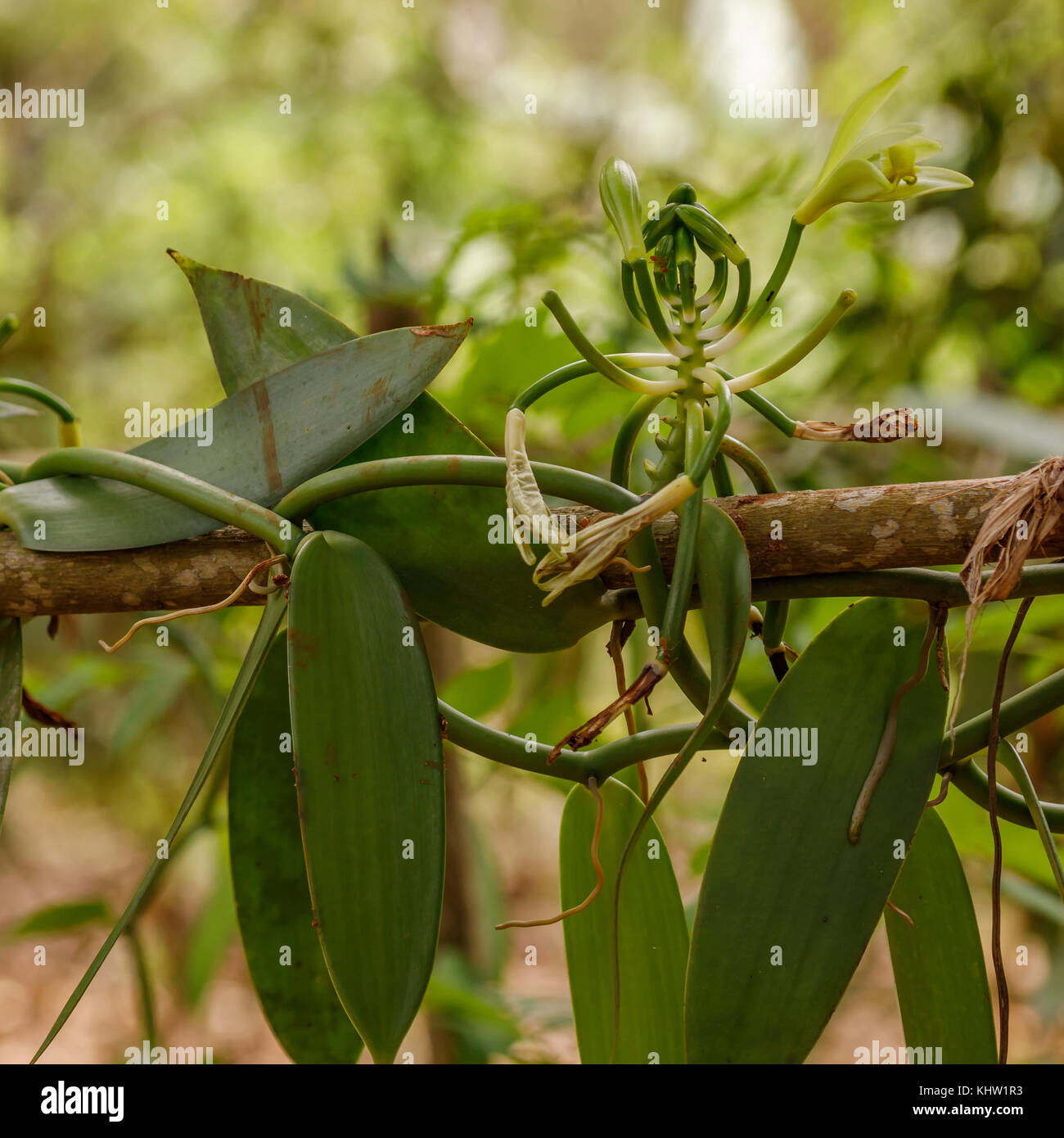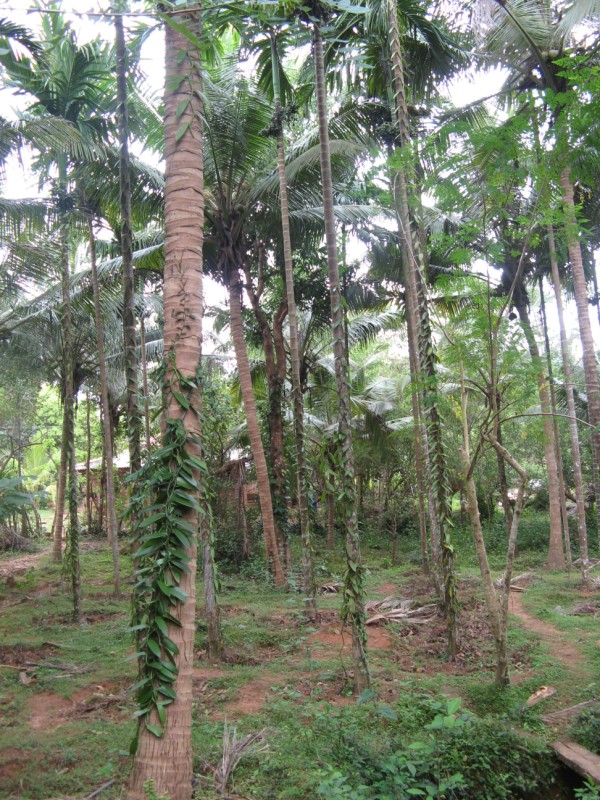
And they are grown in the indigenous forests of the island, where Casuarina spp. They are cultivated in shade-cloth tunnels, where the vines are supported by deadwood pickets. wood are used to support the growing vanilla vines. The plants are grown in open fields, where tutors made of Pleomele sp.

Three methods are used to cultivate vanilla. These conditions are typical of Réunion’s tropical climate, Maurice says. Two-thirds of the plant needs to be in the sun and the other third in the shade this will encourage flowering without compromising vine growth. Plants are spaced about 1,5 m apart. The ideal growth conditions for vanilla plants include soils high in organic matter and with excellent drainage, high rainfall and high humidity. The bud that grows from here is attached vertically to a stake using soft ties. The last three nodes of the vine cutting are placed horizontally in trenches in the soil.

These cuttings are taken from terminal buds, along with several aerial roots. The easiest way to reproduce the plant is to graft cuttings onto a mother vine that is about 1,5m in length. Listening to Maurice guide a tour of his 0,81ha vanilla enterprise, it becomes clear that he is extremely proud of what he does and of the high quality vanilla pods and oil that he produces. According to Maurice, the vanilla plant is a robust climbing vine and the terminal bud can grow up to one metre in length in a single month. Maurice produces artisanal vanilla, following mostly traditional practices, including pollinating each V. Maurice Roulof is a fourth-generation vanilla producer on his family’s farm, La Plantation Vanille Roulof, in Réunion. Vanilla originates in Mexico but is today grown in several other countries, including Réunion Island, Madagascar, Indonesia and India.

Gallery: SA Canegrowers Agricultural tour to Reunion Island


 0 kommentar(er)
0 kommentar(er)
